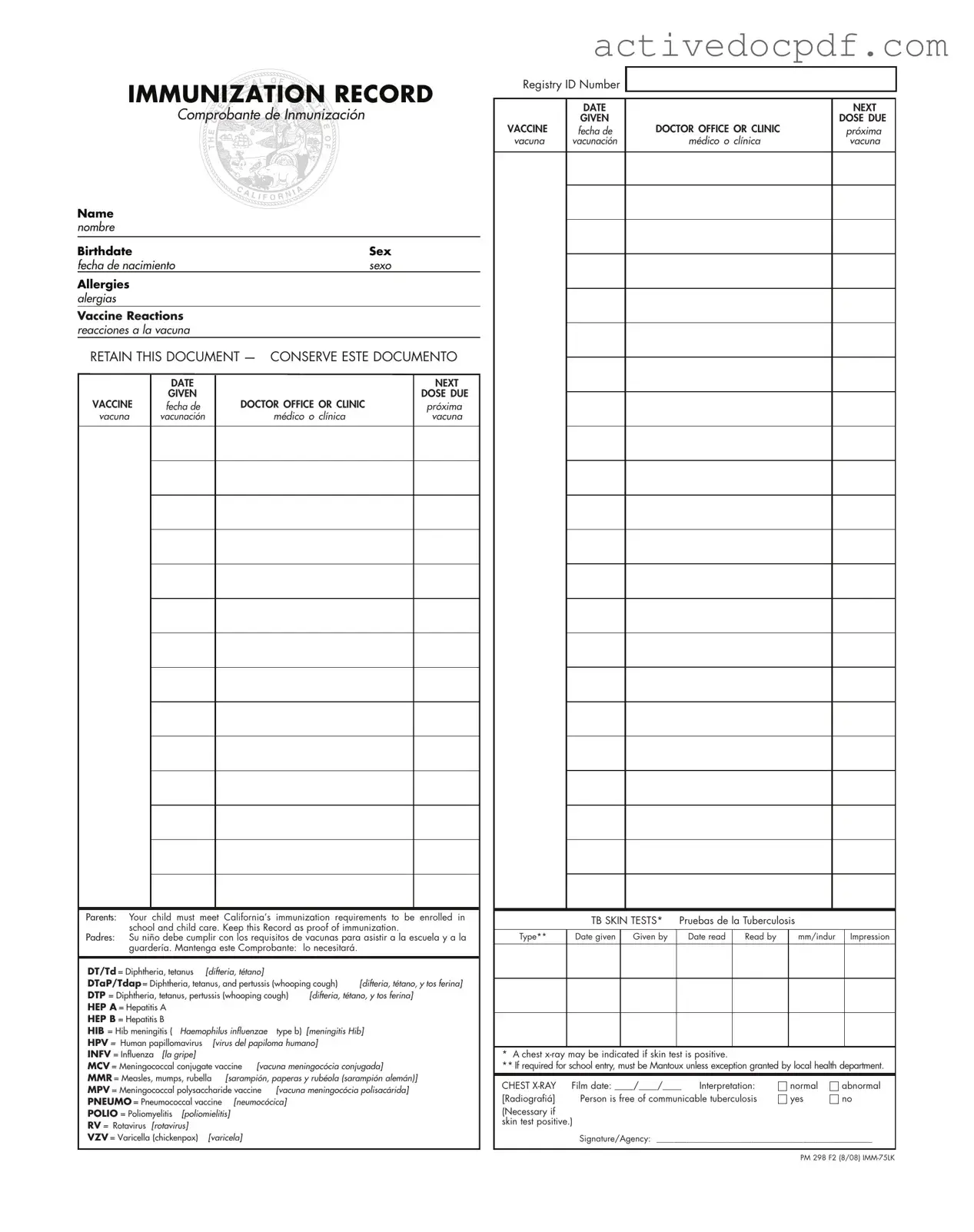Free Immunization Record PDF Form
The Immunization Record form is a document that tracks a person's vaccination history, including details such as name, birthdate, and vaccine reactions. It serves as proof of immunization, which is essential for school and child care enrollment in California. Parents should retain this record to ensure compliance with state immunization requirements.
Edit Form Online
